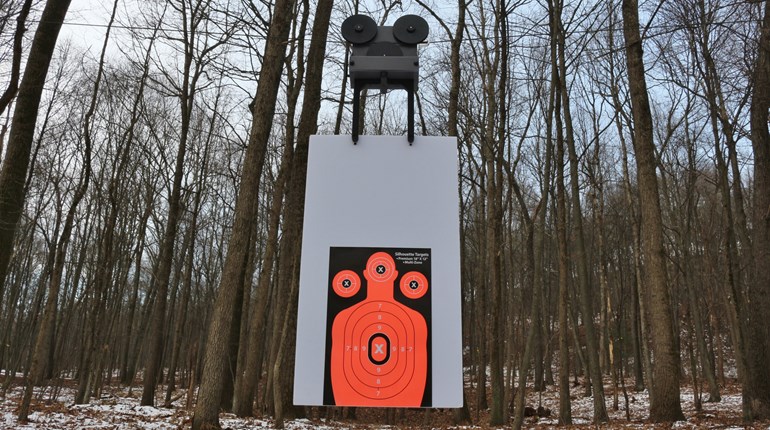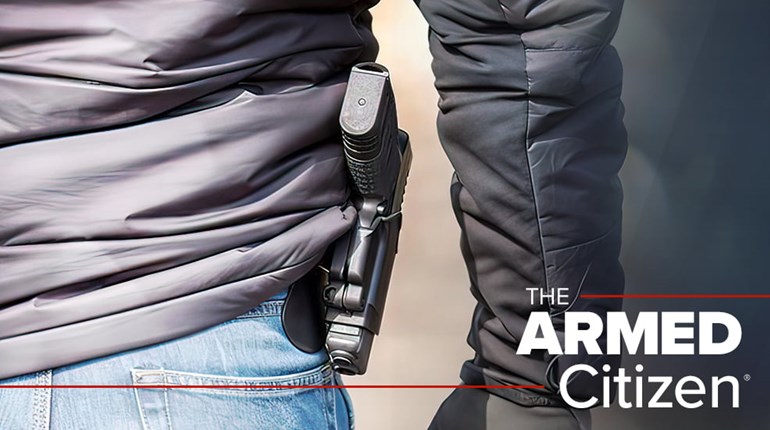
Scrubbed down, a lot of what motivates people to take up firearms ownership is self-sufficiency. Whether for providing food via hunting, or actual personal security—that is, having wherewithal available when a threat appears (and not four, five, 20 minutes or never later)—the “doing” for yourself and loved ones in this crucial role plays a part.
A less obvious sequel is feeding that firearm. With ammunition availability recovering and prices getting back to some sort of normal (finally), it might also seem a strange topic. If a lady or gent can readily buy, why build?
Fair question.
Years ago, relative costs were an even more dramatic issue than they are now, and the benefits correspondingly pronounced. A case in point: Our defensive “proxy,” a load that shot with the same apparent energy and to the same point of aim in our defensive 1911 cost $7/100 to self-manufacture. Short of the actual defensive round (which was 60 cents a pop—this was a loooooong time ago), the only routinely available commercial proxy was Federal Premium Gold Medal Match. It was (and is) fabulous stuff, but was also 44 cents per round at the time.
Math challenged? Homemade was a little over six times cheaper, though we grant our reliability was only about 98 percent. We don’t ever recall having a failure in the primo Federal fodder. Our pre-reloading accommodation was for on-sale American Eagle, and the ratio dropped to four-to-one. Still a beating: We wanted to shoot more than that.
To some extent, those days are gone and unlikely to return. We can recall on-sale primers at a third of what they are now, powder for 25-50 percent less, and lots of “free” brass: The number of folks who let once-shot factory brass simply fall to the ground was astonishing. It was like picking up dimes, literally. So we’re “thrifty” Scots … what’s your point?

Today, our home-built “match” ammo affords a 30-40 percent savings; say $13-14/100 vs. $20-21—though this is 9 mm, where margins are slimmest. If your time is worth anything to you, this may not seem like an economy at all.
The remaining benefits would probably keep us reloading, however, even if we got upside-down in the process. Except by chance, building your own is the only way to optimize the performance in your firearms, particularly for different types of shooting from a single gun.
Many folks know this where it concerns rifle ammunition. In competition circles, it’s uncommon to find winners routinely shooting store-bought ammo, though rimfire and shotgun are often exceptions.
Hunters experience this too, particularly with heirloom rifles. Superb performance must be tuned, among other things, to the harmonic interaction of the action and barrel during the shot, and this is simply a bridge too far for factory offerings. This is not a hack on factory ammo: Especially from premium American makers, it’s probably better than it’s ever been. But there are just too many variables in most cases to optimize all performance in all rifles, period.
The same is true in handguns, though the parameters are less scrutable. Or they are so, at least, until you experience them. We’re in the heyday of the semi-automatic, and the one thing no manufacturer wants to acquire is the reputation that their ammunition won’t run the new ABC-0987, particularly if the ‘ol -0987 is the current hot rock. Corollary to this is the American tendency to think, “If a lot is good, more is even better.” When it comes to anything that smacks of power, this is especially true. As a formula for optimization, however, [factory] could hardly be worse.
By this route—both circuitous and suspect—we generally arrive at handgun ammunition that is at or near the top of SAAMI power levels. For the most part, this remains a benefit: Most ammunition runs most pistols, and manufacturers of either take this into beneficial account. If nothing else, it raises the delivery of satisfactory, repeatable “bang” to very high levels. That’s good, as far as it goes.
As a formula for optimization, however, it could hardly be worse. Literally dozens of factors affect how a given firearm will work for a given shooter trying to accomplish a given shooting task. (Proof? Look at how militaries and law enforcement agencies tightly limit choices in the pursuit of reliability and interoperability.)
Happily, those constraints don’t apply to most civilians, and it’s further interesting to note just how big a percentage of subsidized MIL/LE pros reload for their personal shooting: Their duty experience educates them on “factory” limitations in a hurry.
We’re dealing with another case in point just now—pistol caliber carbines. If you look back a little, you’ll find we’ve worked on these a bunch in the last two or three years. This is both personal and professional: Gear industry-wise, these fit that “hot rock” notion like a glove, but they’re also coming on in competitive circles in a big way. Then there’s that “just plain fun” (and gobs of it) part. But talk about variables! Our JP seems to be an omnivore, almost to the point of trouble (more on this down the road), and the CZ Scorpion EVO 3 S1 not far behind (watch for our review at the end of the month). Others are proving not quite so easy to make perform their very best. And like it or not, none have shot most accurately or pleasantly with factory ammunition. Just sayin’. … like it or not, none have shot most accurately or pleasantly with factory ammunition. Just sayin’.
So if you want to teach a new shooter, get 10-shot/1-inch groups prior to that hunt of a lifetime, or have the fun/challenge of devising a combination that makes firearm “X” do job “Y,” it’s time to think about reloading. And we did say benefits—plural—didn’t we? Well, it’ll teach you an awful lot about other facets of shooting, and for many of us, it’s about a third of the fun.
Over the next several weeks, we’re going to take a look at reloading from the ground up. It promises to be a substantial journey, which perhaps is no surprise considering our buildup. The good news is that we’ve lined up a lot of major players in the reloading world, and they’ll be supporting us with products, and better still, expert advice. (So you who already reload: Stick around, there may well be more to learn.)
Get ready to exercise a whole new sort of freedom, and take that self-sufficiency to a useful new level.
Frank Winn has been studying arms and their relationship to tyranny, meaningful liberty and personal security all his adult life. He has also been a competitive shooter and firearms safety/shooting instructor for more than 20 years, though he won’t admit how many more than 20.


































